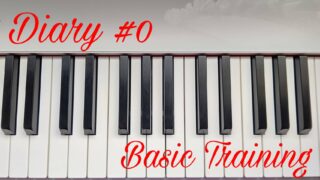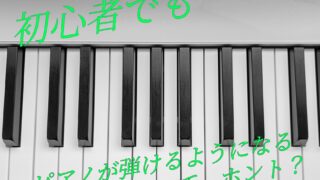TOEFL ibt リーディングテストのスコアを改善するには…
自分も、リーディング問題に苦戦したことがありますが、
一番の対策は、多読をすること。
このシリーズでは、リーディング対策用の設問も合わせて
様々なトピックでリーディング練習が出来るようにしております。
ぜひ、活用して、自身のスコアアップを目指して下さい。
本文
Title: Renaissance Art: A Cultural Revolution
The Renaissance, a period spanning roughly from the 14th to the 17th century, was a time of profound artistic, cultural, and intellectual transformation in Europe. During this era, there was a revival of interest in the classical art, literature, and knowledge of ancient Greece and Rome. This revival, often regarded as the birth of the modern world, had a significant impact on various artistic forms, laying the foundation for what is now considered Renaissance art.
Humanism and Artistic Expression
Central to Renaissance art was the humanist movement, which emphasized the study of classical texts, human dignity, and individual potential. Humanism profoundly influenced artists, encouraging them to depict the human body with greater accuracy and naturalism. Artists like Leonardo da Vinci and Michelangelo became renowned for their anatomically precise representations, capturing the essence of the human form and emotion in their works.
Perspective and Realism
Renaissance artists pioneered the use of linear perspective, a technique that created the illusion of depth and three-dimensionality on a flat surface. This innovation allowed artists to depict scenes with remarkable realism. The application of light and shadow, known as chiaroscuro, further enhanced the illusion, giving paintings a sense of depth and solidity. Artists such as Raphael and Titian mastered these techniques, creating artworks that appeared almost lifelike.
Innovation in Artistic Mediums
The Renaissance also witnessed innovations in artistic mediums. Oil painting, introduced in Northern Europe, allowed for richer colors and finer details in artworks. Artists could now achieve a greater range of tones and textures, enhancing the overall visual impact of their paintings. The availability of new pigments expanded the artist’s palette, enabling a broader spectrum of colors and artistic expression.
Patronage and Artistic Centers
The flourishing of Renaissance art was closely tied to patronage. Wealthy individuals, including rulers, merchants, and the Church, commissioned artworks to enhance their prestige and reflect their cultural sophistication. Major Italian cities like Florence, Venice, and Rome became artistic hubs, fostering creativity and collaboration among artists, architects, and scholars. These centers of learning and creativity attracted talent from across Europe, leading to the exchange of ideas and techniques.
Legacy and Influence
The impact of Renaissance art extended far beyond its time. It laid the foundation for subsequent art movements, influencing styles like Baroque and Neoclassicism. The emphasis on individual creativity, technical mastery, and the representation of the natural world became enduring ideals in Western art. Even today, Renaissance masterpieces are celebrated and studied, serving as a testament to the enduring power and beauty of this transformative period in human history.
設問
Questions:
- What was a central focus of the Renaissance period?
A. Scientific discoveries
B. Classical art and knowledge
C. Industrial revolution
D. Religious dogma - Which movement profoundly influenced artists during the Renaissance, leading to more accurate depictions of the human body?
A. Impressionism
B. Realism
C. Humanism
D. Surrealism - What technique, pioneered during the Renaissance, created the illusion of depth and three-dimensionality in artworks?
A. Cubism
B. Linear perspective
C. Abstract expressionism
D. Pointillism - Which artistic innovation allowed for richer colors and finer details in Renaissance paintings?
A. Watercolor painting
B. Fresco painting
C. Oil painting
D. Tempera painting - Which Italian city was a major artistic center during the Renaissance, fostering creativity and collaboration among artists, architects, and scholars?
A. Milan
B. Florence
C. Naples
D. Venice - What enduring ideals in Western art were established during the Renaissance period?
A. Emphasis on minimalism and simplicity
B. Focus on abstraction and distortion
C. Emphasis on individual creativity and technical mastery
D. Focus on chaotic and disorganized compositions - What technique, involving the use of light and shadow, enhanced the illusion of depth and solidity in Renaissance paintings?
A. Tenebrism
B. Chiaroscuro
C. Sfumato
D. Impasto - Which artist from the Renaissance period is renowned for his anatomically precise representations of the human body?
A. Raphael
B. Michelangelo
C. Titian
D. Van Eyck - What did the humanist movement emphasize, influencing artists to depict the human body more accurately?
A. Study of classical texts, human dignity, and individual potential
B. Focus on religious themes and symbolism
C. Exploration of abstract concepts and ideas
D. Study of non-Western cultures and traditions - What artistic technique was introduced during the Renaissance period, allowing artists to achieve a greater range of tones and textures?
A. Engraving
B. Etching
C. Oil painting
D. Tempera painting
解答・解説
- What was a central focus of the Renaissance period?
Correct Answer: B. Classical art and knowledge Explanation (Japanese):
ルネサンス期の中心的な焦点は、古典的な芸術と知識でした。この時期は、古代ギリシャとローマの芸術、文学、知識への興味の再興を特徴としており、これがモダンな世界の始まりと見なされています。 - Which movement profoundly influenced artists during the Renaissance, leading to more accurate depictions of the human body?
Correct Answer: C. Humanism Explanation (Japanese):
ルネサンス期に芸術家に強い影響を与えたのはヒューマニズム運動でした。ヒューマニズムは、古典的なテキストの研究、人間の尊厳、個人の可能性に焦点を当て、芸術家をより正確な人体表現に導きました。 - What technique, pioneered during the Renaissance, created the illusion of depth and three-dimensionality in artworks?
Correct Answer: B. Linear perspective Explanation (Japanese):
ルネサンス期に開発された線形透視法は、芸術作品に奥行きと立体感の錯覚を生み出す技術でした。この手法により、平らな表面上で立体感を表現することが可能となりました。 - Which artistic innovation allowed for richer colors and finer details in Renaissance paintings?
Correct Answer: C. Oil painting Explanation (Japanese):
ルネサンス期に導入された油絵具は、絵画でより豊かな色彩と細部を表現するのに適していました。油絵の技法は、色調と質感の幅広いスペクトルを得ることを可能にし、絵画全体の視覚的なインパクトを高めました。 - Which Italian city was a major artistic center during the Renaissance, fostering creativity and collaboration among artists, architects, and scholars?
Correct Answer: B. Florence Explanation (Japanese):
ルネサンス期における主要な芸術の中心地の1つはフィレンツェでした。フィレンツェは、芸術家、建築家、学者の間で創造性と協力を促進し、多くの有名な芸術作品がこの地で生まれました。 - What enduring ideals in Western art were established during the Renaissance period?
Correct Answer: C. Emphasis on individual creativity and technical mastery Explanation (Japanese):
ルネサンス期に確立された西洋芸術の永続的な理想は、個人の創造性と技術の優れた点に重点を置いています。これは、芸術家が自身の才能を最大限に活かし、技術的な熟練度を持って作品を制作するというアプローチを強調しています。 - What technique, involving the use of light and shadow, enhanced the illusion of depth and solidity in Renaissance paintings?
Correct Answer: B. Chiaroscuro Explanation (Japanese):
ルネサンス絵画で奥行きと実体感の錯覚を高めるのに使用された技法は「キアロスクーロ」でした。これは光と影の効果を利用して、物体の形や質感をよりリアルに表現する手法です。 - Which artist from the Renaissance period is renowned for his anatomically precise representations of the human body?
Correct Answer: B. Michelangelo Explanation (Japanese):
ルネサンス期の芸術家で、人体の解剖学的に正確な表現で知られるのはミケランジェロです。彼は彫刻家と画家として活躍し、その作品は人体の美しさと複雑さを優れた精密さで捉えています。 - What did the humanist movement emphasize, influencing artists to depict the human body more accurately?
Correct Answer: A. Study of classical texts, human dignity, and individual potential Explanation (Japanese):
ヒューマニズム運動は、古典的なテキストの研究、人間の尊厳、個人の潜在能力に重点を置いていました。これらの理念は芸術家に影響を与え、人体のより正確な描写を促しました。 - What artistic technique was introduced during the Renaissance period, allowing artists to achieve a greater range of tones and textures?
Correct Answer: C. Oil painting Explanation (Japanese):
ルネサンス期に導入された油絵具は、芸術家が色調と質感の幅広いスペクトルを実現するのに役立ちました。これにより、絵画はよりリアルで立体的に見え、芸術家の表現の幅が広がりました。
本文の日本語訳
Title: ルネサンス美術:文化の革命
ルネサンスは、おおよそ14世紀から17世紀にかけての時期で、ヨーロッパで深い芸術的、文化的、知的な変革の時代でした。この時代には、古代ギリシャとローマの古典的な芸術、文学、知識への興味が復活しました。この復興は、現代世界の始まりと見なされることが多く、さまざまな芸術形式に大きな影響を与え、現在のルネサンス美術と考えられるものの基盤を築きました。
ヒューマニズムと芸術表現
ルネサンス美術の中心には、ヒューマニズム運動がありました。これは古典的なテキストの研究、人間の尊厳、そして個人の潜在能力を強調した運動でした。ヒューマニズムは芸術家に大きな影響を与え、彼らに人体をより正確に、自然に描写することを奨励しました。レオナルド・ダ・ヴィンチやミケランジェロなどの芸術家は、人体の本質と感情を捉えた解剖学的に正確な作品で有名でした。
遠近法とリアリズム
ルネサンスの芸術家たちは、平面上で奥行きと立体感の錯覚を生み出す線形透視法の使用を先駆けました。この革新により、芸術家は驚くほどリアルなシーンを描写できるようになりました。光と影の効果である「キアロスクーロ」の適用は、錯覚をさらに高め、絵画に奥行きと実体感を与えました。ラファエロやティツィアンなどの芸術家は、これらの技法を習得し、ほとんど実在のように見える作品を作り上げました。
芸術的媒体の革新
ルネサンスはまた、芸術的媒体における革新も目撃しました。北欧で導入された油彩は、絵画でより豊かな色彩と細部を表現するのに役立ちました。芸術家はこれにより、絵画全体の視覚的なインパクトを高めることができました。新しい顔料の入手可能性は、芸術家のパレットを拡張し、さまざまな色と芸術的表現を可能にしました。
庇護と芸術の中心地
ルネサンス美術の繁栄は、庇護と密接に関連していました。裕福な個人、君主、商人、教会などが、彼らの名声を高め、文化的な洗練を反映した芸術作品を依頼しました。フィレンツェ、ヴェネツィア、ローマなどの主要なイタリアの都市は、芸術の中心地となり、芸術家、建築家、学者の間で創造性と協力を促進しました。これらの学習と創造の中心は、ヨーロッパ全体から才能を引き寄せ、アイデアと技術の交換を促しました。
遺産と影響
ルネサンス美術の影響は、その時代をはるかに超えて広がりました。これは、後のバロックや新古典主義などの芸術運動の基盤を築き、西洋芸術における個人の創造性、技術の優れた点、自然界の表現に重点を置いた永続的な理想を形成しました。現代でも、ルネサンスの傑作は賞賛され、研究されており、これは人間の歴史におけるこの変革期の持続的な力と美の証拠となっています。
次の問題
[広告]
確かな英語力は、日々の継続から。
その継続を後押しする、第二言語習得理論に基づいた
オンライン英語学習プログラムがあります。
英語を使う人のための、確実なスキルアップが望める
7日間の無料体験はこちらから!

TOEFL ibt ライティング対策も、
あるテクノロジーを活用すれば、一発解決!
自分1人でも、ライティングは対策出来る時代に。
英会話を始めてみたいけれど、どのサービスが良いか分からない…
そんな方は、まず、この記事で3つのサービスを比べてみてはいかがでしょうか?
英語力を効率良く伸ばすことができるサービス3選です。



-320x180.jpg)
-320x180.jpg)
-320x180.jpg)


-320x180.jpg)

-320x180.jpg)
-320x180.jpg)
-320x180.jpg)
-320x180.jpg)



コメント